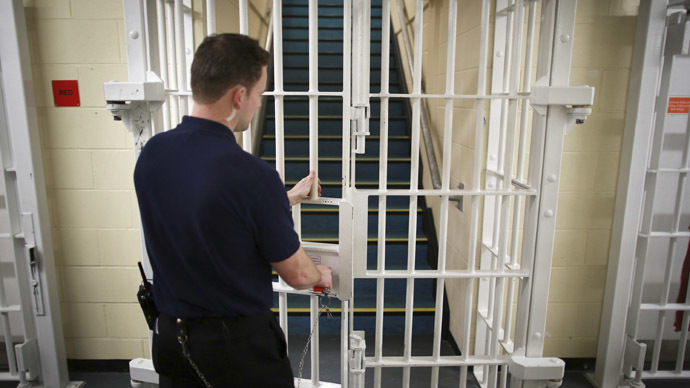Is staff Wellbeing a sufficient priority for the Prison Service in England & Wales?
11th August 2017

Last week, Andrea Albutt, President of the Prison Governor’s Association, described many prisons in England and Wales to be in “crisis”. This follows multiple riots earlier last week in HMP Mount in Hertfordshire. This is yet another alert to the conditions prevalent in prisons in England and Wales and the need for improvement.
Some blame austerity measures for the recent decline in conditions. Between 2010 and 2016 the number of frontline prison officers fell by 26%, delivering cumulative savings of £900m between 2010 and 2015[1].
The government acknowledges the need for change. In November 2016 the government committed to increasing frontline officer numbers by 2,500 by 2018. Despite significant efforts to recruit, there was only an increase of 75 by March this year[2].
The difficulty to recruit staff is only worsened by the difficulty to retain staff. Both point to one single factor: working conditions are poor and it is impacting on the level of staff wellbeing.
In the last two years assaults on staff have increased by 88%. In the last year to March, there were 7,159 attacks to staff – equivalent to nearly 20 a day.
In early July, a prison officer from HMP Norwich sustained a neck injury after being attacked by a prisoner with a bladed weapon.
In mid-July, sixteen officers from Holme House, County Durham were off work having breathed in smoke blown from prisoner’s cells from the psychoactive substance Spice. The symptoms suffered included racing heartbeats, high blood pressure, seizures, palpitations, anxiety, vomiting, hallucinations, lack of bowel control, depression and aggression[3].
It is not only officers’ physical safety that is at risk. Ministry of Justice data obtained by the Times shows that officers took 30,000 days of work due to stress in 2015-16. This averages to around 2 days per officer. The national average across all sectors is half a day. This is unsurprising.
In addition to officer numbers falling, prisoner numbers are increasing. This is adding to already present overcrowding, with two prisoners often sharing a cell meant for one. Not only does this decrease the space each prisoner is given, but it makes it more difficult to allow prisoners sufficient time of out of their cells. This is because officers have more work than they can cope with. There are too many prisoners for the number of officers and officers cannot assure control when prisoners are outside of their cells. Officers are able to not only see the consequences of this for themselves, such as stress, worry and tiredness, but for the prisoners too. There is also little capacity for rehabilitative programmes.
344 prisoners died in the year to March 2017, the highest number on record. A third of these deaths were self-inflicted. Whilst this highlights the alarming issue of prisoner mental health and is not to be overlooked, one must also consider the impact upon officers. Finding prisoners who have died or who have very serious injuries is likely to be traumatic and distressing. It is certainly not something staff are likely to leave ‘in the office’.
The current reality in prisons is by no means the result of one isolated factor: prisoner numbers are increasing as a result of earlier policy changes, the introduction of synthetic psychoactive substances to the market that are more difficult to test for has contributed to greater drug problems, and crowding in prisons means prisoners are confined to smaller spaces for longer amounts of time. Nevertheless, it is clear that there are not enough staff to deal with current work demands and this is impacting upon staff wellbeing. Prison officer numbers need to increase in order to cope with the current and increasing numbers of prisoners, better control the influx of contraband, and manage prisoner routines more effectively. In order to recruit and retain officers to increase workforce numbers, the wellbeing of staff must become a priority.
So why are the conditions within prisons not physically and psychologically safe?
- Too many prisoners and not enough staff – i.e. too much work
Work levels may well be above the capacity and capability of staff. This causes staff to feel stressed and overworked. Staff are likely to feel tired, and their physical and mental health may also suffer. In other sectors, this is a common reason for staff to look for other jobs.
- The work conditions are perpetuating harm – i.e. avoidable harm is not addressed as a key organisational priority
Staff shortages mean prisoners spend more time in their cells as there may not be sufficient staff numbers to control prison areas safely. Lack of stimulation, activity and exercise for prisoners contributes to increases in violence, both towards staff and other prisoners, and increases in the use of substances.
- The inability to inhibit contraband entry/illegal substance use undermines a sense of order and control – i.e. appropriate autonomy to control the work environment isn’t in place
Autonomy is a key Psychological Safety element at work. Current prison methods to prevent the entry of contraband are not effective. There appear to be insufficient staffing levels to dedicate to strategically combatting the issue and officers are on the receiving end of this.
- The ability of policy makers to hear what prison officers identify as the detailed changes that are needed, and providing timely support to them does not appear to be happening at the pace and level needed.
The problems facing the prisons systems are multi-factorial. The solution requires a holistic approach. However, it is certain that to retain staff, wellbeing conditions must improve. Individuals must be able to feel psychologically and physically safe to carry out their job. Hence, staff Wellbeing must become a priority for the prison system at a strategic and operational level, otherwise the current challenges will continue.





